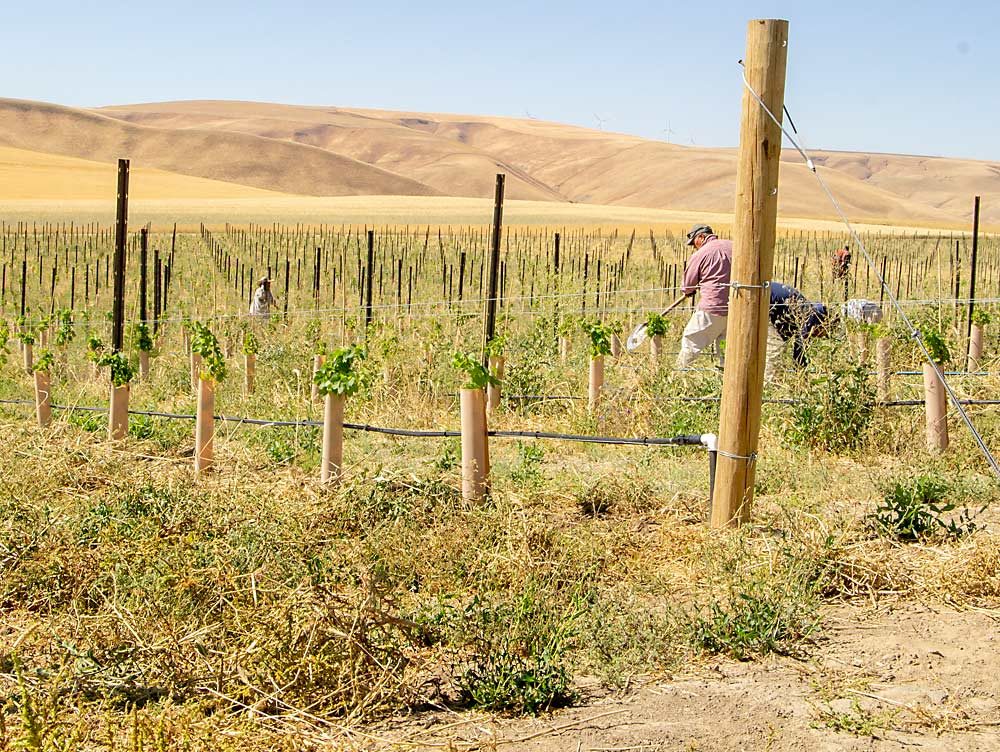
Heading into harvest, wine grape growers in Walla Walla, Washington, face a new complication: phylloxera has been found in several area vineyards.
It’s likely been lurking for a while, but the recent detections mean the growers in the region need to take steps during harvest to minimize the risk of spreading the soil that may carry the quarantine pest, said Gwen Hoheisel, extension specialist with Washington State University.
The new detections are concerning, but not catastrophic, said Vicky Scharlau, executive director of Washington Winegrowers, in a recent newsletter to members. The pest was first discovered in the state more than 100 years ago but has never established into a management concern.
The new detections highlight the importance of planting certified clean vines, she said.
Phylloxera feeds on vine roots and leaves and has no impact on fruit quality, but it takes a toll on vine productivity over time. Most of the regions where it has become an established pest rely on resistant vinifera rootstocks, but most of the vineyards in the Walla Walla AVA and across Washington are own-rooted.
“Like every good grower knows, vineyards will be productive for years with careful management,” Scharlau wrote. “Your job is, first and foremost, to NOT allow any spread with equipment or your shoes (!) by moving soil or vine roots between vineyards.”
To that end, Washington Winegrowers and WSU shared a list of harvest best management practices to reduce the spread of soilborne pests such as mealybugs and phylloxera, including:
—Limit access to your vineyard.
—Restrict vehicles to paved or gravel roads and loading areas.
—Thoroughly clean equipment that comes in contact with soil.
—Scrub and clean boots.
Washington State Department of Agriculture officials are working with WSU, Washington Winegrowers and Washington State Wine to assess the situation and develop short- and long-term response strategies. More information will be available to the industry soon.
Read more about the best practices here: https://cdn.ymaws.com/www.wawinegrowers.org/resource/resmgr/issue_briefs/winegrowers-harvest_bmp_s_20.pdf
—by Kate Prengaman






Leave A Comment